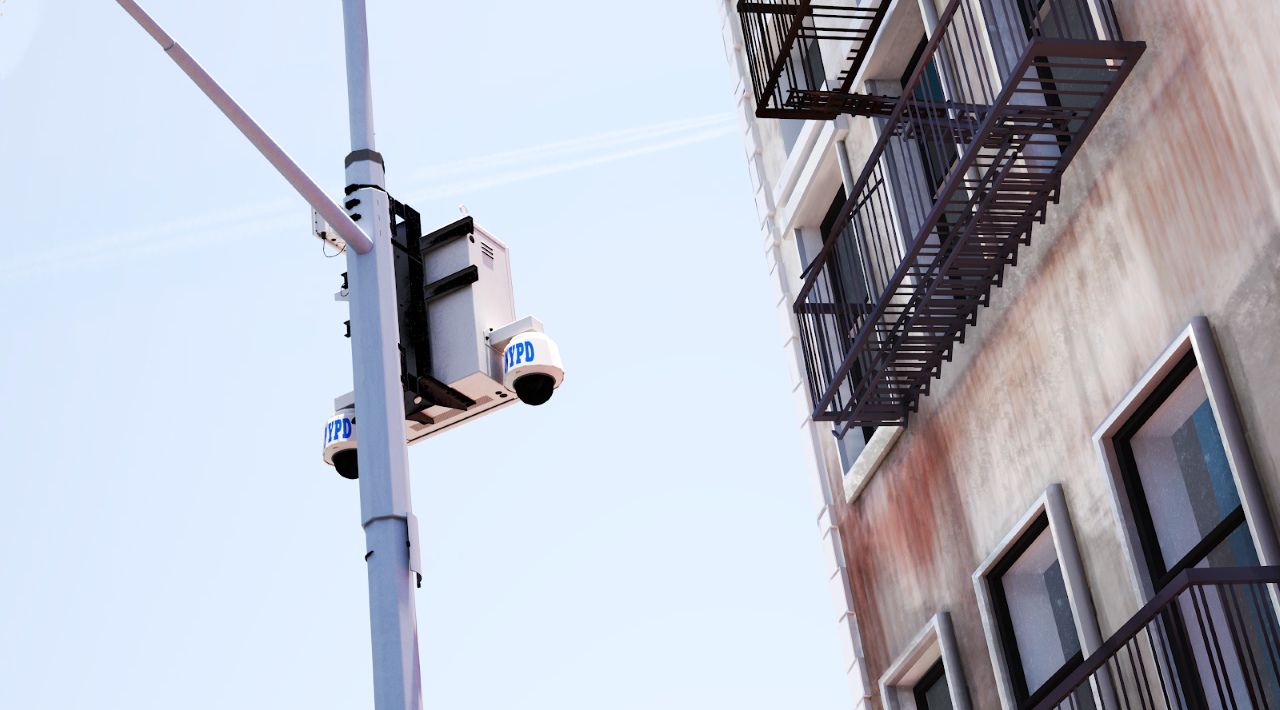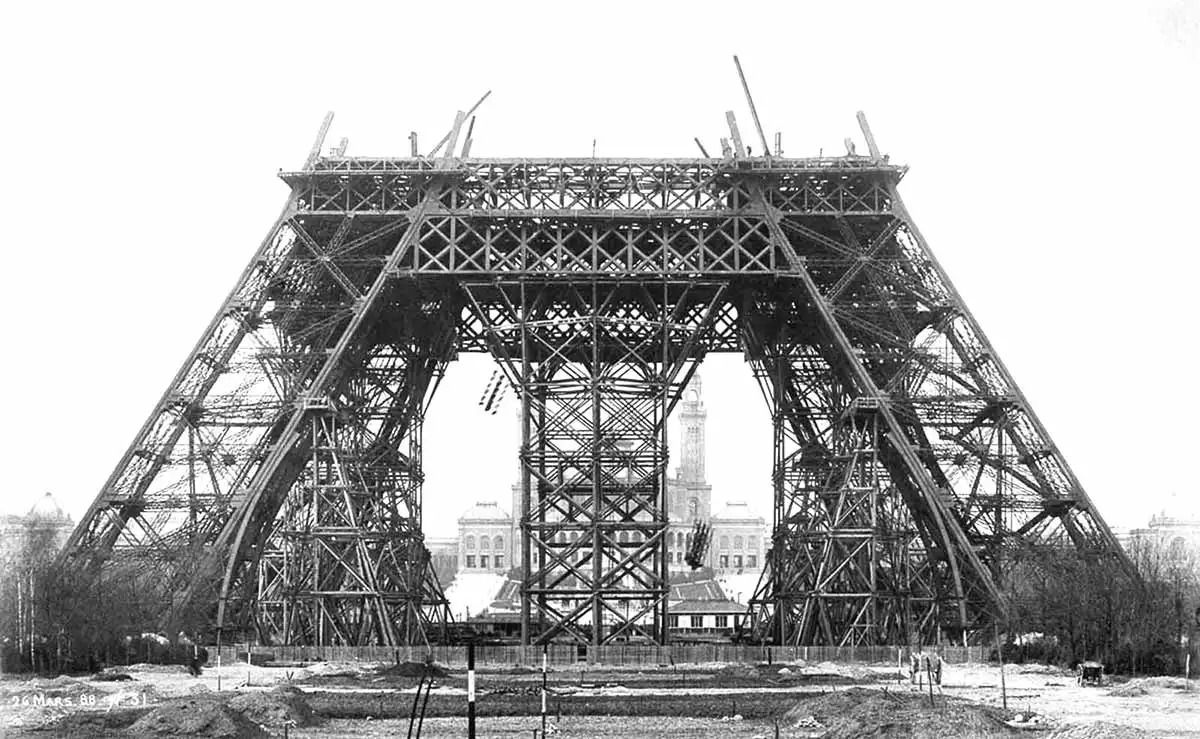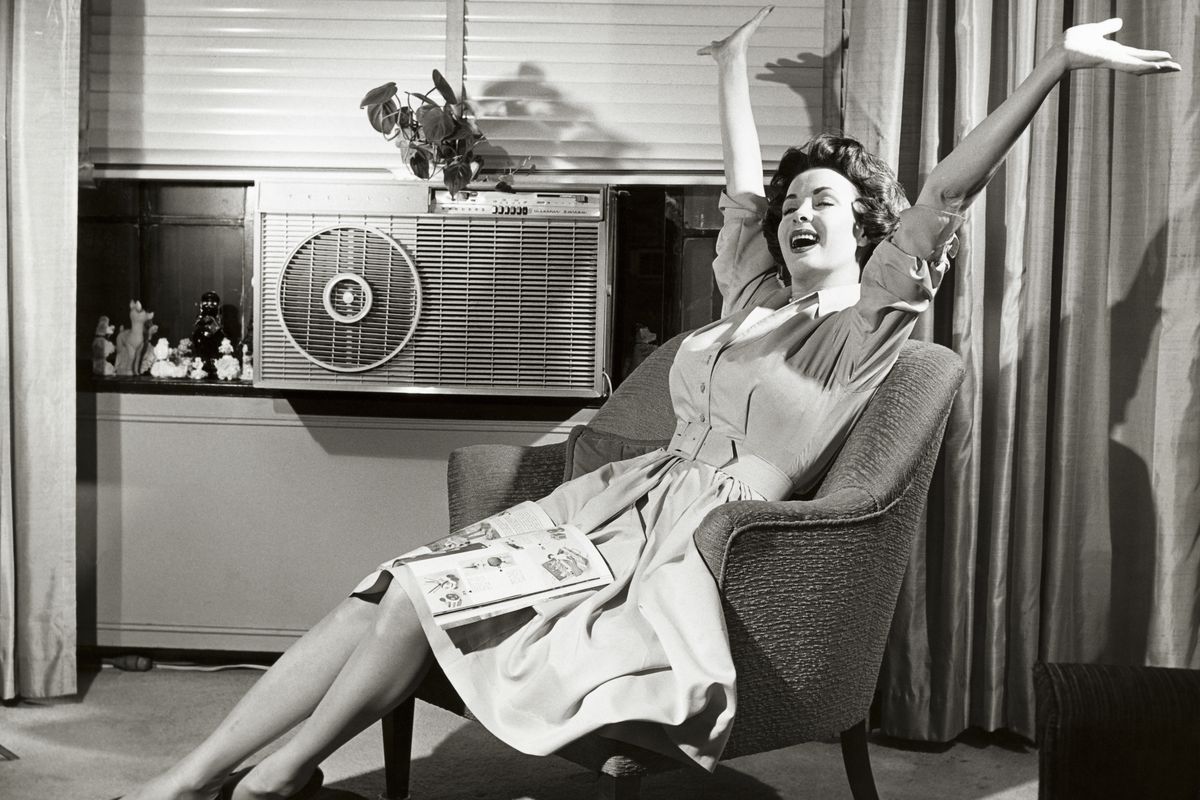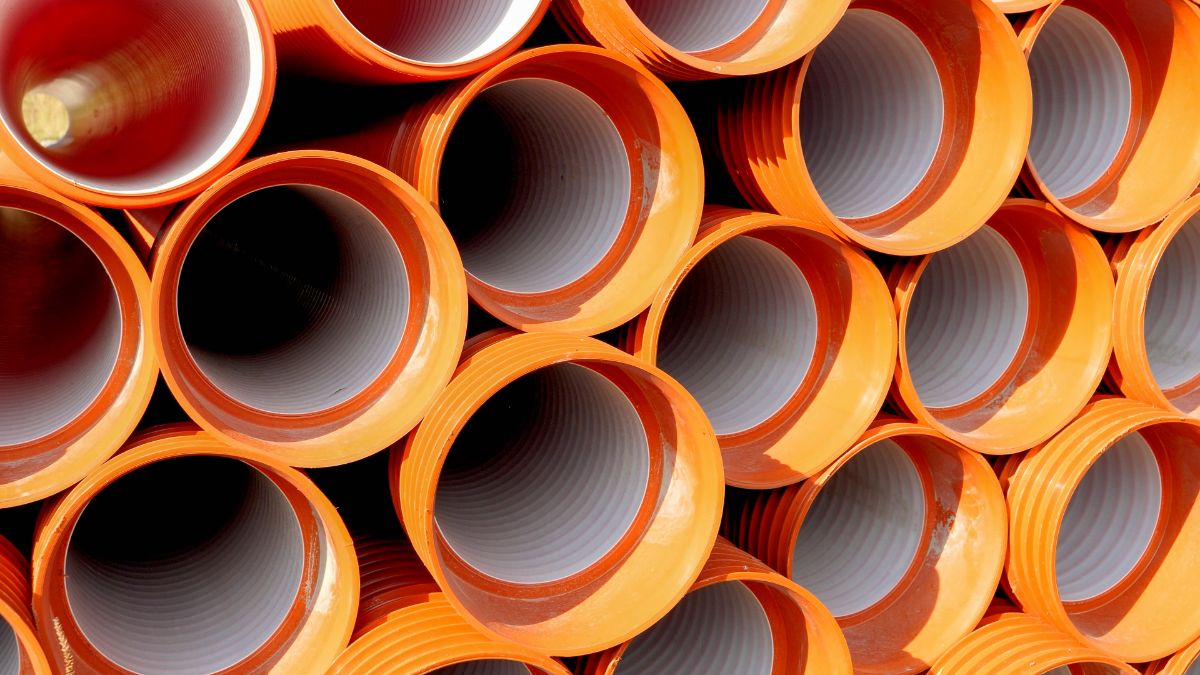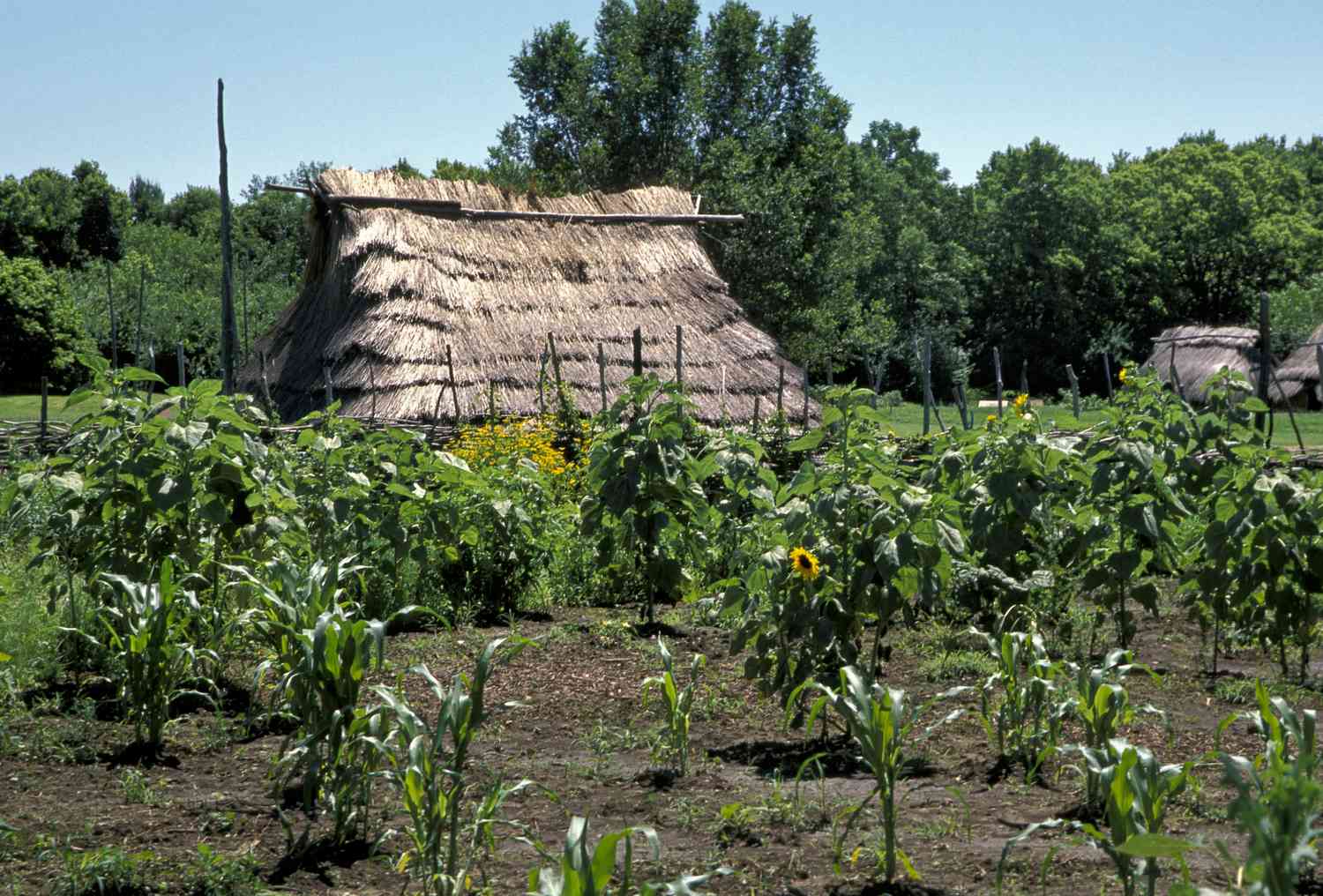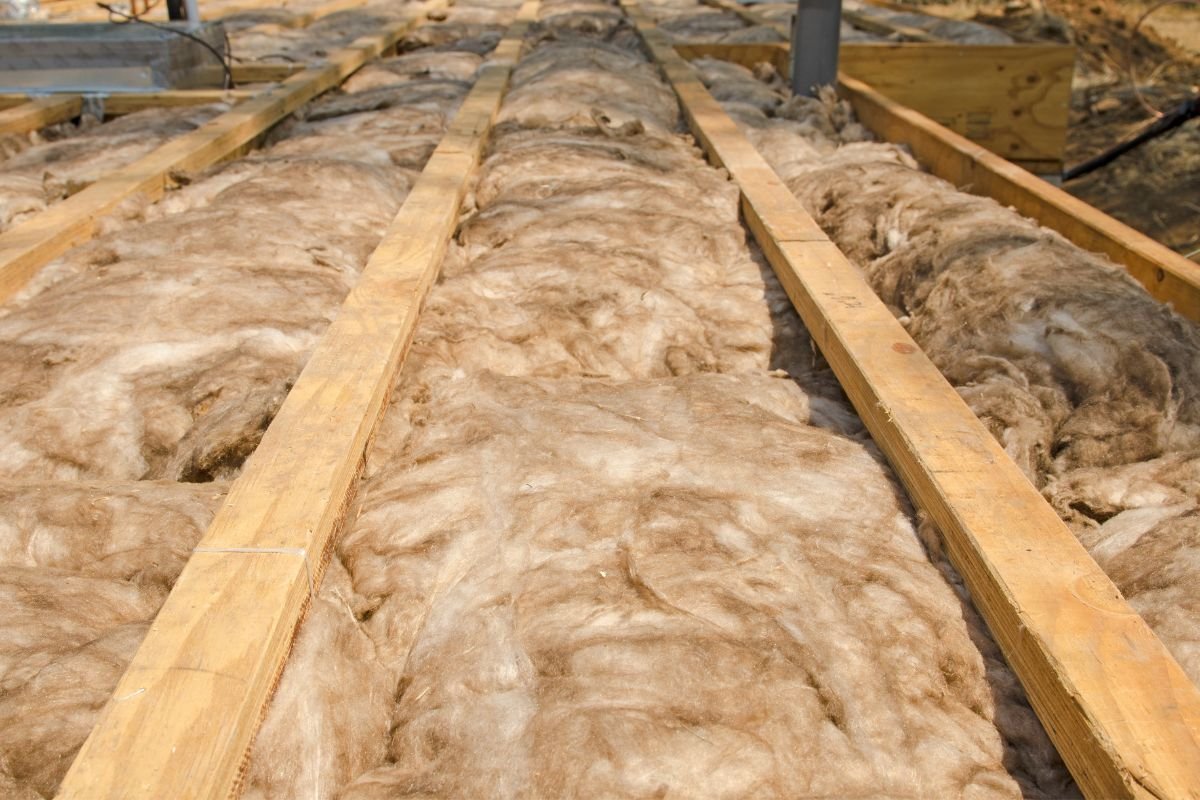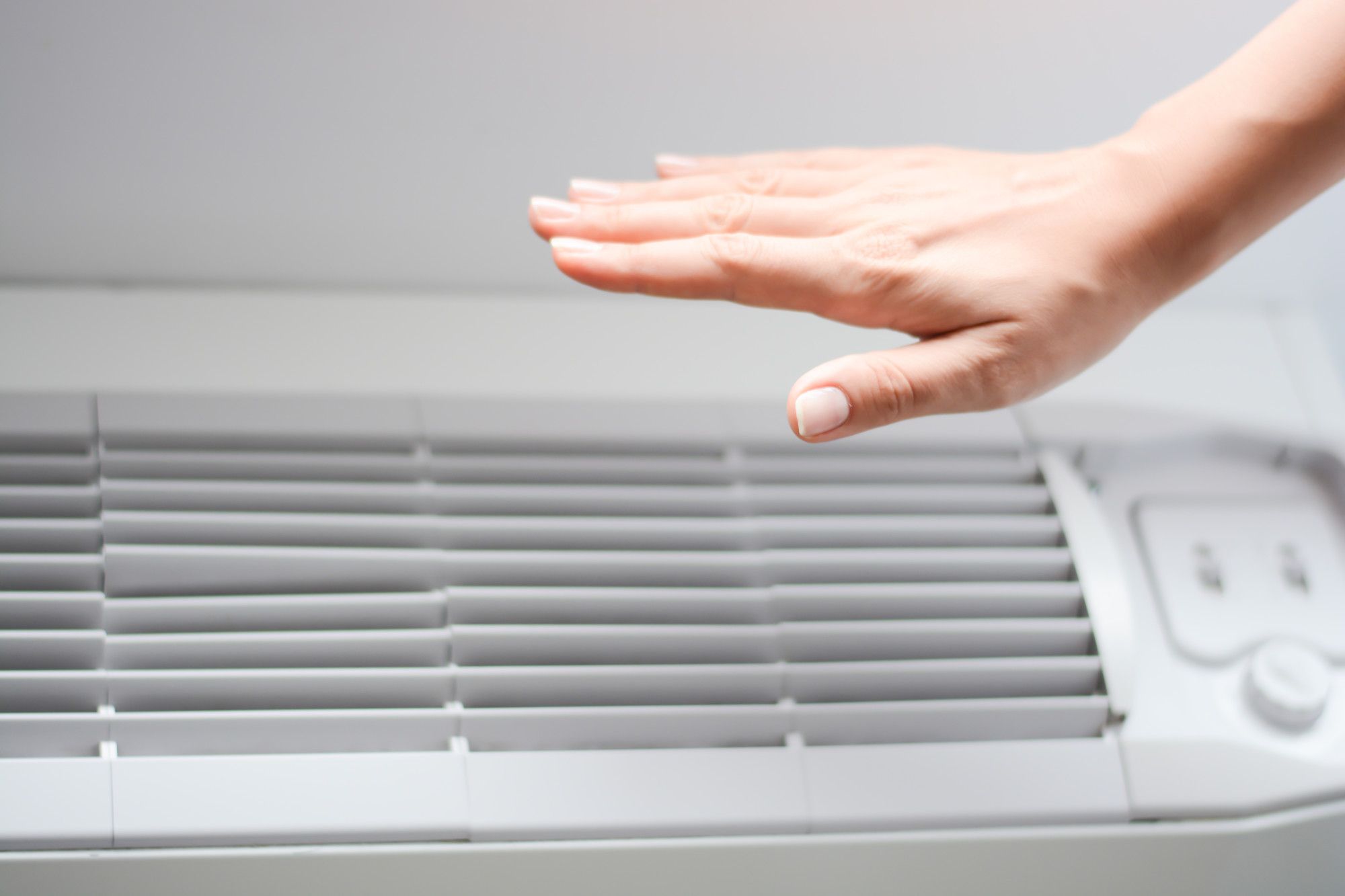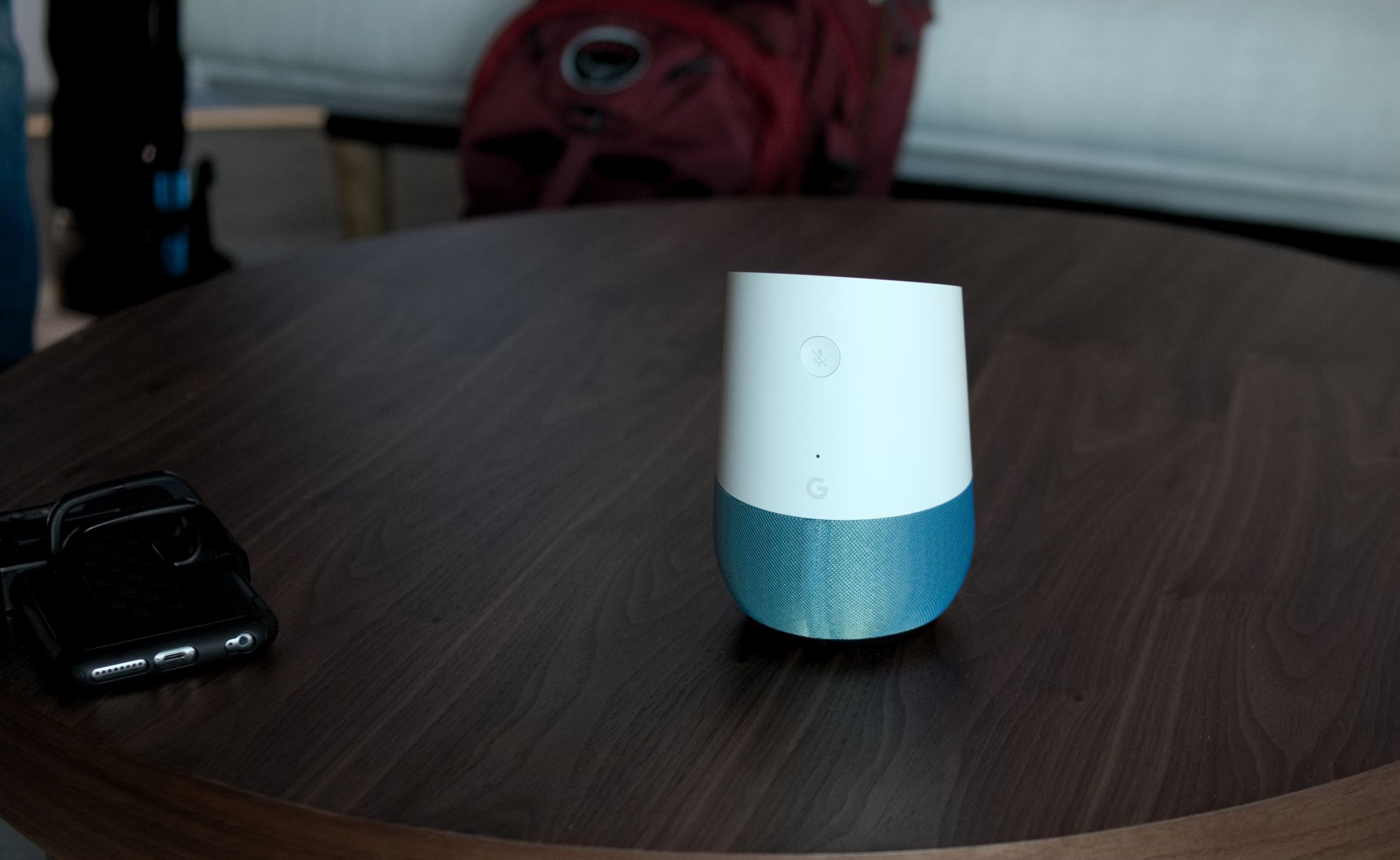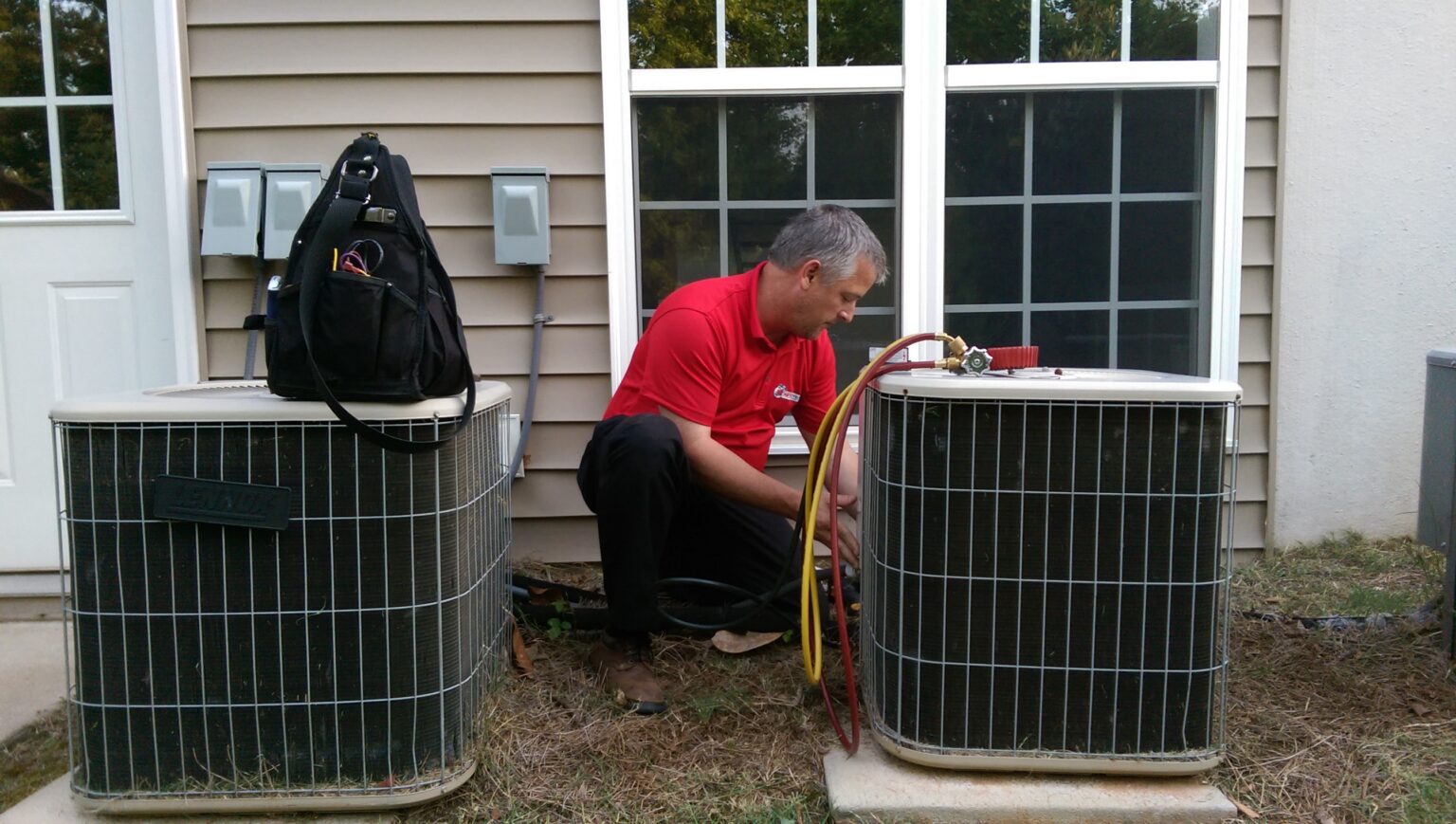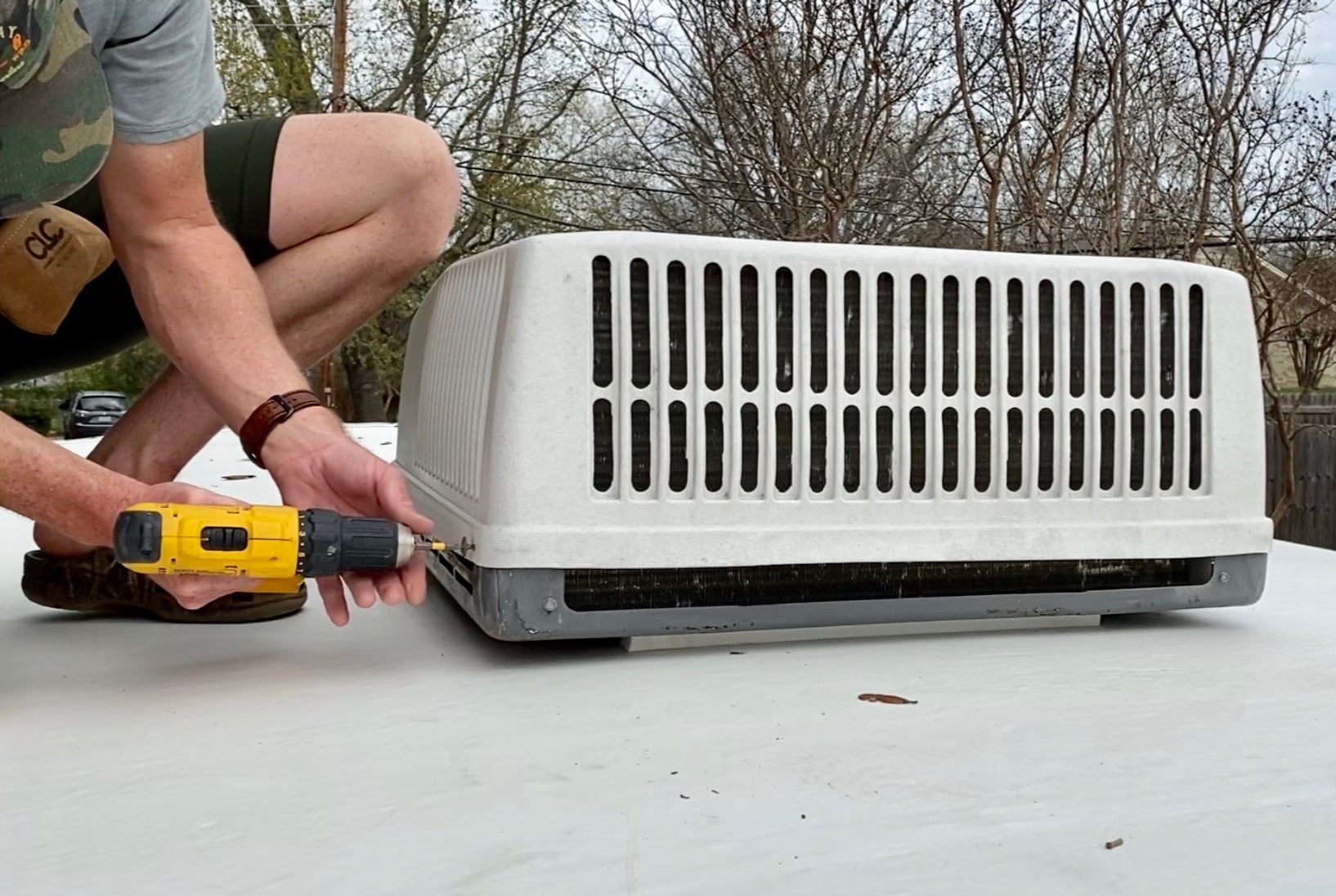Home>Home Maintenance>When Did Home Air Conditioning Start


Home Maintenance
When Did Home Air Conditioning Start
Modified: August 27, 2024
Learn about the history of home air conditioning and when it first started. Discover the importance of home maintenance for optimal cooling.
(Many of the links in this article redirect to a specific reviewed product. Your purchase of these products through affiliate links helps to generate commission for Storables.com, at no extra cost. Learn more)
Introduction
When it comes to maintaining a comfortable living space, one of the most important factors to consider is air conditioning. The ability to regulate the temperature and humidity of our homes has become an essential aspect of modern living. But have you ever wondered when home air conditioning actually started?
In this article, we will delve into the fascinating history of home air conditioning, exploring the early cooling methods adopted by ancient civilizations, the invention of the electric fan, and the birth of modern air conditioning systems. By the end, you will have a comprehensive understanding of how home cooling has evolved over the years, allowing us to enjoy the comfort and convenience of air conditioning today.
So, let’s embark on a journey through time and discover the origins of home air conditioning.
Key Takeaways:
- Ancient civilizations used innovative methods like evaporative cooling and wind towers to stay cool before modern air conditioning. Their creativity laid the foundation for the comfort we enjoy today.
- The invention of the electric fan and modern air conditioning by Willis Carrier revolutionized home cooling, leading to advancements in energy efficiency, smart technology, and sustainability for a more comfortable future.
Read more: When Did Forced Air Heating Start?
Early Cooling Methods
Long before the invention of electricity and modern air conditioning systems, ancient civilizations found innovative ways to keep cool during hot summer months. These early cooling methods were simple yet effective, using natural elements and clever engineering.
One of the earliest known cooling methods can be traced back to ancient Egypt, where people would hang wet reeds in their windows. As the hot air passed through the moistened reeds, it would evaporate the water and create a cooling effect in the room. The concept of evaporative cooling is still used today in devices such as evaporative coolers or “swamp coolers.
In ancient Rome, wealthy citizens were known to use a more luxurious method of cooling. They would have water cascading down the walls inside their homes, creating a cooling sensation as the air passed over the moist surfaces.
In the Middle East, people utilized wind towers to redirect and cool the air. These towers, also known as “badgirs” or “windcatchers”, were strategically built to catch the prevailing winds and direct them down into the living spaces below. The airflow created a natural cooling effect, providing relief during scorching summers.
It is interesting to note that in many ancient cultures, shade played a significant role in cooling homes. Buildings were designed with narrow windows and thick walls to provide shade and insulation from the heat. Additionally, courtyards and gardens were utilized to create microclimates and minimize the impact of the intense sun.
While these early cooling methods may seem primitive by today’s standards, they laid the foundation for our modern understanding of air conditioning. They demonstrate the resourcefulness and ingenuity of early civilizations in their quest to escape the heat and create a more comfortable living environment.
The Invention of the Electric Fan
In the late 19th century, the invention of the electric fan revolutionized the way we cool our homes. Before the electric fan, people relied on manual handheld fans or ceiling-mounted fans operated by hand or pulleys. The invention of the electric fan brought about a new era of convenience and comfort.
The first electric fan was invented by Schuyler Skaats Wheeler in 1882. This early fan consisted of a motor connected to blades that spun rapidly, creating a breeze that helped to cool the surrounding area. Initially, electric fans were predominantly used in commercial and industrial settings, but it didn’t take long for them to make their way into residential homes.
Electric fans provided a practical and affordable solution for cooling individual rooms. The ability to adjust the speed and direction of the blades allowed users to customize their airflow preferences. The fan became a staple in many households, especially during the hot summer months.
As technology progressed, so did the design and functionality of electric fans. They became more efficient, quieter, and aesthetically pleasing. Oscillating fans were introduced, capable of distributing air throughout an entire room. Portable fans were developed, allowing users to move them easily from one room to another.
Electric fans not only offered relief from the heat but also improved ventilation. They helped to circulate air, preventing stagnant and stuffy environments. This was particularly important in homes without proper air flow or access to natural breezes.
While electric fans provided a significant advancement in home cooling, they were limited in their ability to control temperature and humidity. They relied on the ambient air temperature and could only create a breeze rather than true air conditioning. This led to the development of more sophisticated cooling systems that would eventually transform the way homes are cooled.
The first modern home air conditioning system was invented in 1902 by Willis Carrier. It was installed in a printing plant to control the temperature and humidity, but it wasn’t until the 1920s that air conditioning started to be used in homes.
The Birth of Modern Air Conditioning
The birth of modern air conditioning can be attributed to Willis Carrier, an American engineer who invented the first electrical air conditioning system in 1902. Carrier’s invention marked a significant milestone in the history of home cooling, laying the foundation for the advanced air conditioning systems we have today.
Carrier’s initial goal was to solve a humidity problem for a printing company in Brooklyn, New York. He realized that by controlling the humidity of the air, he could also control the temperature. This led him to develop a system based on the principles of refrigeration.
The basic concept of Carrier’s air conditioning system involved passing air over chilled coils. The moisture in the air would condense on the cold surface, effectively reducing the humidity and lowering the temperature. This process, known as dehumidification, was a significant breakthrough in achieving optimal indoor comfort.
Carrier’s invention quickly gained recognition and popularity, especially in commercial and industrial applications. The ability to create controlled indoor environments revolutionized various industries, including textile manufacturing, food processing, and movie theaters. Theaters became particularly popular during the summer months as people sought refuge from the heat in the cooled comfort of cinemas.
As the demand for air conditioning grew, the technology advanced further. Innovations such as central air conditioning systems and air ducts were introduced, allowing for the cooling of entire buildings and homes. Window air conditioning units also became widely available, making air conditioning more accessible to the general public.
Modern air conditioning systems utilize compressors, fans, and refrigerants to regulate temperature and humidity. They can be found in residential homes, office buildings, hospitals, and even vehicles. The comfort and convenience provided by air conditioning have become an integral part of our daily lives, ensuring pleasant indoor environments regardless of the external weather conditions.
The birth of modern air conditioning was a game changer, transforming the way we live, work, and relax. It has become an indispensable aspect of our modern lifestyle, enabling us to escape the heat and enjoy a cool and comfortable sanctuary.
Advances in Residential Air Conditioning
Over the years, there have been significant advances in residential air conditioning technology, improving efficiency, comfort, and convenience for homeowners. These advancements have made air conditioning systems more sustainable, user-friendly, and customizable, enhancing the overall indoor living experience.
One notable advancement in residential air conditioning is the development of programmable thermostats. These devices allow homeowners to set specific temperature schedules, optimizing energy usage and reducing costs. Programmable thermostats can automatically adjust the temperature based on occupancy patterns, ensuring comfort when needed while conserving energy when no one is home.
Another significant advance is the introduction of smart home technology to air conditioning systems. With the rise of the Internet of Things (IoT), homeowners can now control and monitor their air conditioning units remotely using smartphone apps or voice commands. This level of connectivity offers convenience and flexibility, allowing for precise temperature control even when away from home.
Energy efficiency has also become a major focus in residential air conditioning. Newer systems are designed to consume less electricity while maintaining optimal cooling performance. The use of advanced compressor technology, improved insulation, and energy-efficient refrigerants has contributed to reducing the environmental impact of air conditioning systems.
In recent years, there has been increased emphasis on indoor air quality. Many residential air conditioning systems now incorporate air purifying features to remove allergens, pollutants, and bacteria from the air. This promotes a healthier living environment, especially for individuals with respiratory issues or allergies.
Additionally, there has been a trend towards more discreet and aesthetically pleasing air conditioning solutions. Ductless mini-split systems have gained popularity due to their flexible installation options and sleek design. These systems allow for zoned cooling, enabling homeowners to customize the temperature in different areas of their homes, further improving energy efficiency.
Furthermore, advancements in air conditioning technology have led to the development of systems with improved noise reduction. This ensures a quieter and more peaceful indoor environment, minimizing disruptions caused by the operation of air conditioning units.
As residential air conditioning continues to evolve, the integration of renewable energy sources such as solar power is an emerging trend. This not only reduces dependency on grid electricity but also makes air conditioning more sustainable and environmentally friendly.
With ongoing research and innovation, the future of residential air conditioning holds the promise of even greater efficiency, customization, and sustainability. As homeowners embrace these advancements, air conditioning systems will continue to enhance our indoor living spaces, providing comfort and well-being for years to come.
Read more: When Did Home Air Conditioning Become Common
Conclusion
The invention and evolution of home air conditioning have transformed the way we live, providing us with comfortable and controlled indoor environments regardless of the external weather conditions. From the early cooling methods of ancient civilizations to the birth of modern air conditioning systems, we have come a long way in our quest for optimal home cooling.
Early cooling methods such as evaporative cooling, water cascading, and wind towers laid the foundation for the development of more sophisticated cooling techniques. The invention of the electric fan brought about a significant shift in home cooling, offering convenience and improved ventilation. However, it was the birth of modern air conditioning by Willis Carrier that truly revolutionized the industry, allowing for precise temperature and humidity control.
Advancements in residential air conditioning have further enhanced the comfort and efficiency of home cooling. Programmable thermostats, smart home technology, and energy-efficient systems have made air conditioning more sustainable and convenient for homeowners. The focus on indoor air quality, discreet design, and noise reduction has further improved the overall air conditioning experience. The integration of renewable energy sources also holds promise for a greener future.
As technology continues to advance, we can expect even more innovation in the field of home air conditioning. From improved energy efficiency to enhanced customization and sustainability, the future of residential air conditioning looks promising.
In conclusion, home air conditioning has come a long way since its humble beginnings. What started as simple methods of cooling has evolved into sophisticated systems that provide comfort, convenience, and better air quality. As we continue to explore new possibilities, the evolution of home air conditioning will undoubtedly shape the way we experience indoor living for years to come.
Frequently Asked Questions about When Did Home Air Conditioning Start
Was this page helpful?
At Storables.com, we guarantee accurate and reliable information. Our content, validated by Expert Board Contributors, is crafted following stringent Editorial Policies. We're committed to providing you with well-researched, expert-backed insights for all your informational needs.
